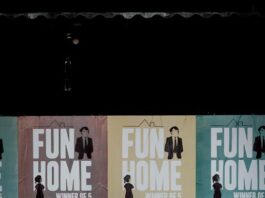
By Katie Stobbart (The Cascade) – Email
Print Edition: June 4, 2014

It would be nice to be able to trust adult professionals to negotiate ideological differences responsibly, but the BC government’s “negotiation” tactics read more like retaliation tactics in a marital spat.
In the BC Public School Employers’ Association (BCPSEA) document providing information for parents during the BCTF’s strike action, there is a chart showing what teachers are and aren’t allowed to do now that the BC government has initiated a lockout in response to the strike action.
The first column contains the BCTF’s strike action, and the second details the BCSPEA’s reaction. So as per strike action, teachers will not “be at a worksite prior to one hour before commencement of instructional time and one hour after the end.” The government’s lockout rules in the second column changes one hour to 45 minutes. The time cut reflects the BCSPEA’s move to cut teachers’ pay by 10 per cent during the strike, reducing the workday by a full hour. The items that follow in the chart similarly take whatever the teacher’s action is to a greater level; it reads as if the government is just attempting to one-up the teachers on every count.
I’m not a labour expert, but that doesn’t sound like a way to encourage negotiation. It sounds like inflammation of an already-smouldering situation.
The strife between teachers and government has lasted for over a decade now. Current conflicts go back to the time now-Premier Christy Clark was the Minister of Education in BC. The government passed legislation in 2002 which, according to a 2011 BC Supreme Court ruling, violated teachers’ bargaining rights on class size and composition.
It always seems to boil down to the same impasse: the education system needs additional funds to run in a way that supports students, and the government is unable or unwilling to make those funds available. There seems to be a persistent struggle between efficiency and quality. It’s the reason things that might seem innocuous, like standardized testing (Foundational Skills Assessment, in BC), are contentious. There are certainly many factors involved in the decision to strike, including wages. But the pressure to produce quantitative results and the effects of that pressure on quality is at the crux. Hot-topic issues like standardized testing and classroom sizes have been the subject of he-said-she-said debate for as long as I can remember.
Many of these issues are familiar at the post-secondary level. Class sizes strike a particular chord for UFV, which has long prided itself on keeping relatively low class sizes compared to other universities. A UFV class is usually on par or only a little larger than a high school class, whereas other institutions can (and often do) have hundreds of students packed into a lecture hall. Having been in a class with 300 other people, I can corroborate that the number of students in a class makes an enormous difference. Opportunities for one-on-one time with the professor are scarce, assignments and exams are often marked by assistants and not the teacher delivering the material, and learning is often strictly limited to readings and lecture.
There are obvious differences between university and public school. But if we can admit, at least at UFV, that classes should be kept small to ensure quality education and that our students have opportunities in their undergraduate degrees (research assistance, for example) that most people don’t get until grad school, it’s not a far leap to acknowledge class sizes are directly linked to the quality of public education as well. Kids need as much one-on-one time as possible with their teachers. Kids need a variety of activities to engage them in the learning process and equip them with a wide breadth of skills — that takes extra preparation from the teacher. Kids need teachers who don’t feel stressed to push for a certain result and can focus on finding ways to for their students to absorb material in ways that correspond to their unique learning styles. They also need support outside the classroom.
I don’t have all the answers to the problems seizing up the education system, whether it’s funding at the university or public school level. But I would like to see more of an effort at open-minded negotiation rather than perpetuation of the same problems.
Surely there’s some way to fix this marriage, for the parents and the kids.



